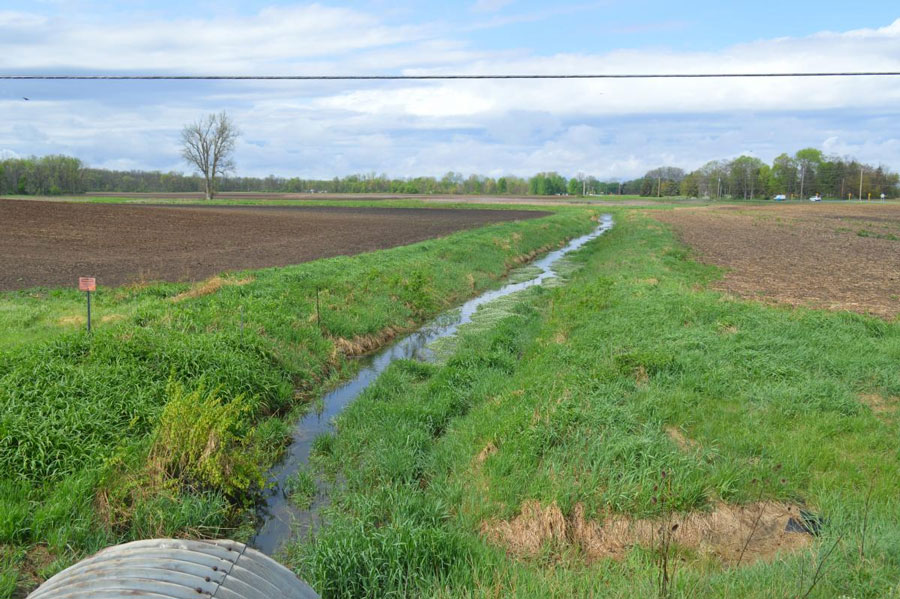I mentioned in my last blog that I would do some research on vegetation filter strips and write about them. It was interesting research, and it brought up more questions that needed answered. But first, vegetation filter strips are used to help limit water contamination and erosion. They’re narrow strips of grasses, legumes, and forbs, that slow the flow of stormwater runoff. Slowing the flow of water will allow time for water to be absorbed into the soil to filter naturally, thus reducing water contamination. Another benefit is that covered soil does not wash away, so vegetation filter strips also help reduce erosion.
While I was reading about filter strips, I came across another Best Management Practice (BMP) that is like the filter strip. This is a buffer strip. Buffer strips are areas of vegetation between cropland and waterways. They are basically a barrier between the farmland and a body of water. Buffer strips help prevent bank erosion and slumping. Both filter strips and buffer strips slow down the flow of water to limit water contamination and soil erosion.
The above led me to read more about soil erosion. Soil erosion occurs when the rain fall amount is more than absorption rate. This will allow stormwater runoff to carry away bare soil. There are two types of soil erosion. One is sheet erosion. Sheet erosion occurs when a shallow sheet of water flows over the ground and removes soil in uniform layers. The other form of soil erosion is rill. Rill erosion occurs when water runoff forms small channels in the soil as it flows down a slope. Rill erosion can also form a gully if water runoff is not addressed. Both types of erosion will carry sediment and contaminate water sources.
Understanding how the flow of water affects erosion is important when planning filter strips and buffer strips. A BMP for rill erosion could be a grassed waterway. Grass waterways are made by grading the eroded area to form a channel which is seeded with grass and/or other vegetation. The stormwater will flow to the grass waterway, and then flow at a non-erosive rate to a stable outlet that will then flow to a river or stream. grass waterways significantly reduce rill or gully erosion.
Another BMP I read about is the Riparian Buffer. The Riparian Buffer or stream buffer is next to the banks of rivers and streams. They serve to protect rivers and streams from the impact of nearby land use such as farming. They reduce the flow of water, which reduces contamination from entering the waterways. Riparian buffers are classified as either grass or forest. The forest buffer is made up of mostly trees, shrubs, and some perennial plants. Tree roots and downed trees will slow the flow of water and become barriers to trap sediment. Grass buffers are just as it sounds. They are made up of a variety of grasses. Grass is a very effective ground cover for slowing the flow of water and traps contaminates.
I found that buffers and filter strips are so closely related that there is no specific distinction between the two. Please leave a comment and let me know what you think. No matter the similarity or the difference, the two practices will help prevent stormwater runoff from contaminating water sources and causing soil erosion.
Our annual fish sale is going on now through April, 26th. Pickup day is May 7th. | Order Online Today! • We will be on Live At Noon on Monday, April 29, 2024 with NRCS.
